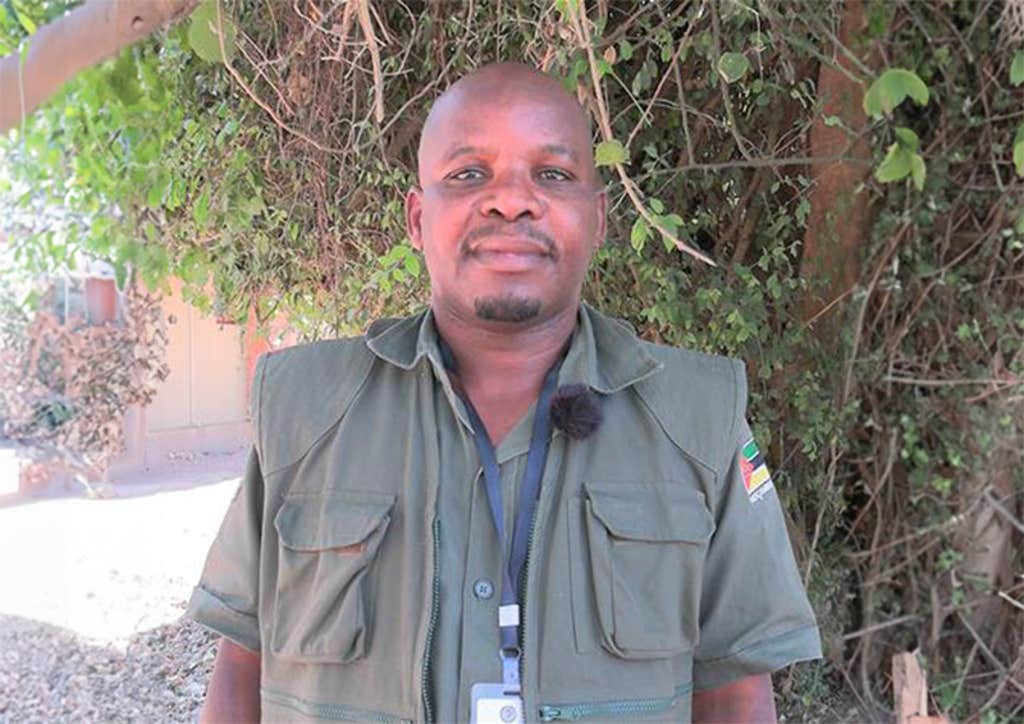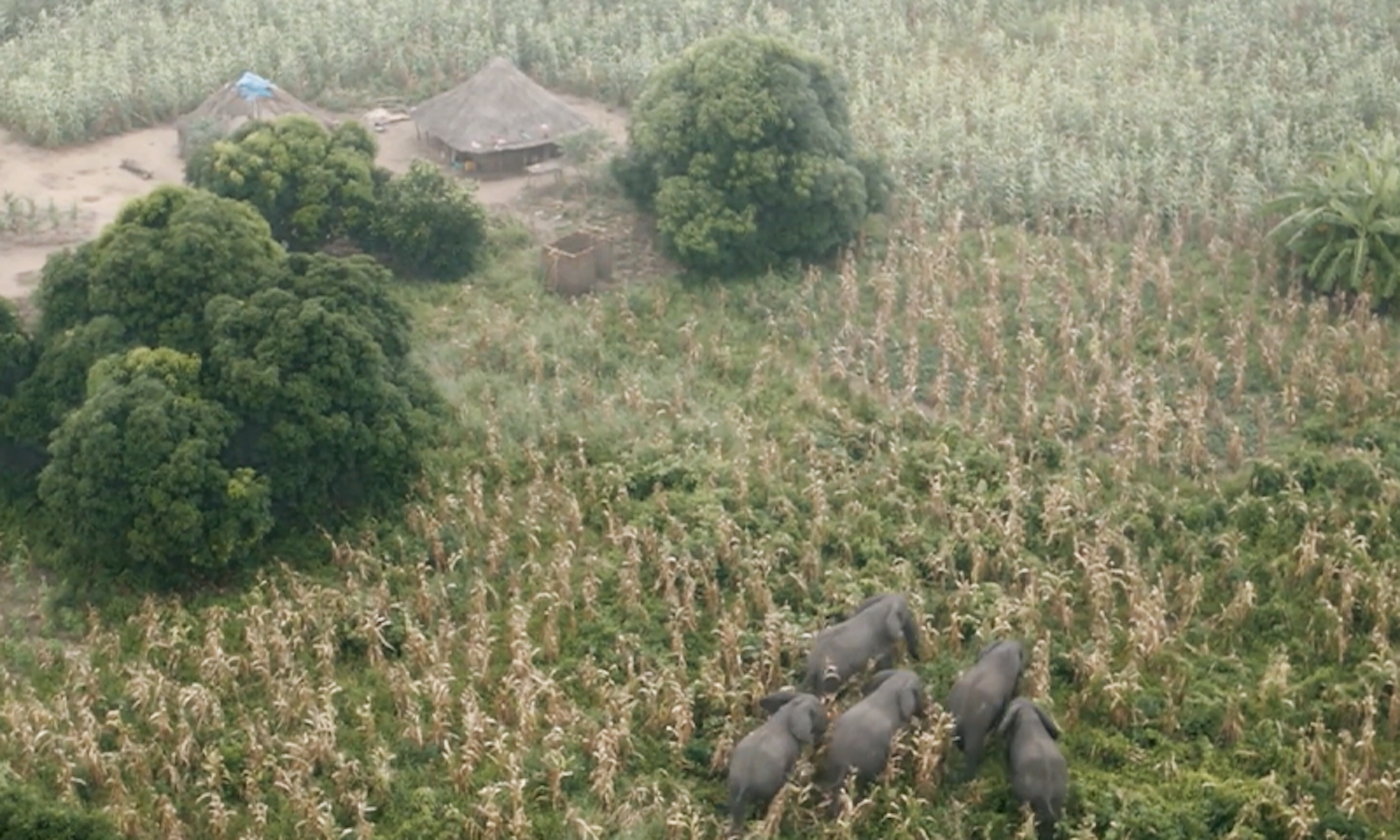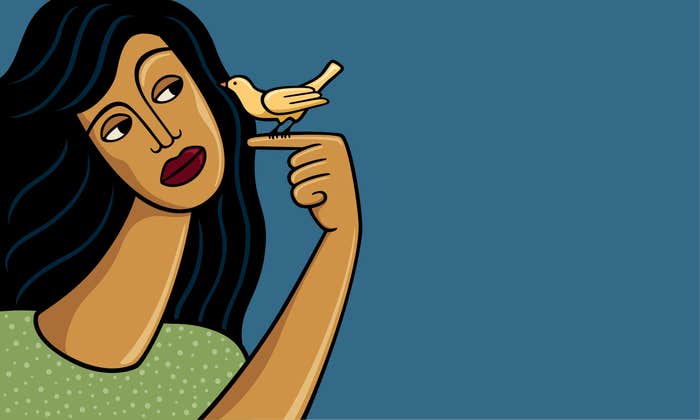
Brad and Beca often cross the Pungwe River from Mozambique’s Gorongosa National Park to visit the village of Vinho, although they never go together. Their rambles to explore the countryside are solitary and often nocturnal. And if they come across something tasty to eat, they just swipe it up without a second thought. These rascally male elephants often run afoul of the villagers whose crops they take, though the villagers use less diplomatic language: They say “pillage” or “steal.”
Brad M5542 and Beca M5550 are a part of the Gorongosa herd, and are satellite-collared so rangers, veterinarians, and scientists can keep track of their movements. But they don’t believe in the boundaries humans have drawn on a map. The people in Vinho and in the necklace of villages along the Pungwe River, which forms the southern boundary of the park, often wish that the pachyderms could learn to respect those limits, those frontiers between the wild and domestic, since interactions between the two parties range from the benign-but-annoying to the deadly. As do the villagers’ dealings with the buffaloes and the hippos, and, of course, the crocodiles.
Encounters between humans and animals do not have to end in tragedy.
Gorongosa National Park prides itself on being a fenceless park. Fences can reduce human-wildlife conflicts in many cases, but they come with their own ecological and social costs by separating ecosystems and alienating the people who live around such protected areas. The lack of a physical perimeter fence around its 1,500 square miles of wilderness creates a sense of boundless landscape both for animals and visitors. But this also means that animals such as Beca and Brad are free to seek their fortunes or meals in the nearby villages of the park’s 2,000-square-mile buffer zone, where approximately 200,000 people live. Marcelino Denja, who manages the park’s reaction team of rangers dealing with human-wildlife conflicts, said that it’s a dynamic situation, since the animals are moving and the people are moving, too. Any area outside the park has the potential of becoming a locus of potential conflict. “In the village, we have the farms and crops,” Denja said. “We have the houses, we have people interacting with [animals] on the roads, we have school children.”
Every day, Denja and the rangers on his team receive alerts from villagers about a wild animal in their communities. Occasionally, the distress call tells of an active conflict: an elephant destroying a traditional granary to get at the corn, who might knock down that villager’s house, possibly with the family inside; a buffalo in a bad mood who decides to charge at a passerby; a crocodile stalking the people who linger by the river. In response, Denja dispatches a ranger from a nearby outpost to investigate and, if necessary, intervene.

In 2022, nine people died in conflicts with the animals in and around the park, principally with elephants but also with buffaloes and crocodiles. Elephant attacks strained the park’s relations with some communities, and some park staff were confronted by villagers. The park also supported a ceremony in one village, a ritual to calm the elephants. Maybe the ritual worked, but some people still wanted more accountability. Denja told me that, to appease some of the affected communities and over the objections of some researchers and park rangers, national parks authorities selected two elephants to shoot and kill from a helicopter last year. He said the bodies of the pachyderms were butchered, and the meat distributed to neighboring villages, a boon for communities whose crops had been compromised by elephant appetites and attacks.
But Denja believes that encounters between humans and animals do not have to end in tragedy. “They can coexist,” he said.
Across the world, people who live next to protected areas or wild spaces in forests, mountains, and savannas face similar challenges. Communities are grappling with gray wolves in Montana, elephants in India, crocodiles in the Philippines, exploring possible solutions. Gorongosa National Park’s human-wildlife coexistence teams both react to animal crises in progress and work with communities—all to facilitate an entente between the two parties, if not a perfect peace.
On my first day in Chitngo, where Gorongosa National Park has its main administrative offices and principal hotel, everyone reminded me to lock the door to my room because animal criminals were afoot. The Chitengo baboons regularly try all the locks and windows, and if they find one unlatched, they sneak in and flip the room, opening closets and unzipping suitcases in search of something to eat. During my visit, they often tried their luck at the breakfast buffet table, too, the one covered with fruit, bread, and pastries. The table was guarded by one or two men, the homens da fisga—men with slingshots—from neighboring villages. Whenever a baboon peeked over the banister and started reaching a hand toward a plate of cake, one of the slingshot men would ping the animal with a pebble to chase it away.
One night at dinner, I overheard someone saying that a baboon had popped into their room while they were out, taking advantage of a window slightly ajar. It trashed the place, ate a whole bottle of medicine, and disappeared into the bush. (I don’t know what kind of medicine it was, only that its owner said the baboon was probably dead as a result of eating the entire bottle.) I went back to my room and checked the windows again. I thought about the baboon’s visitation when I traveled to Vinho, the closest village to the park, about a kilometer beyond the Pungwe River. What must it be like to live every day in such a state of vigilance?
Elephants don’t even need to be stung but are scared off just by the buzz and hum of a beehive.
This is where the Gorongosa human-wildlife coexistence program comes in. Piano Jantar, who works with the nearby villages as part of the program, said the park is implementing a multi-pronged strategy to help people in Vinho and the other villages feel more secure. They are building grain silos made from cement reinforced with metal rods that elephants would have to work harder to knock down than the traditional ones made from wood and straw. Jantar said that the program has constructed more than 500 of these across the region, and at least 150 in Vinho alone. The silos cut down on accidental trampling by elephants eager to get at those stocks of grain during the dry season. It’s the equivalent of people in Chitengo locking their doors to keep the baboons from temptation.
“Another strategy is to strengthen the fences around the river,” said Jantar, as we walked from the boat launch through a path lined with a tangle of reeds and shrubs, and then a grassland that slowly transformed into cropland. The fence, when I finally spotted it, was like no other fence I had ever seen—not an impenetrable barrier at all, but a series of posts connected by ropes and, hanging from these ropes, either bits of metal sheeting or long rectangular boxes full of bees. Some ropes had nothing hanging from them but were coated with foul-smelling creosote.
Each variation, Jantar explained, is thought to dissuade elephants, buffaloes, and hippos from entering human territory. The bits of metal trick the elephants into believing there’s a larger barrier and the creosote smell is thought to be a deterrent. But the bee boxes are the most interesting and most promising approach. Researcher Dominique Gonçalves, who is finishing up her doctorate at the University of Kent in the United Kingdom and is the manager of the park’s elephant ecology project, said that the idea is simple but effective.
“It actually comes from an African folktale that elephants are afraid of bees, but it was actually observed and proved and tested again and peer reviewed and everything,” she said. If an elephant should try to pass, it would shake the hive, which is suspended in the air, and the African honeybees would emerge and attack. Some elephants don’t even need to be stung but are scared off just by the buzz and hum of a beehive.

“It’s a beautiful idea,” said Gonçalves. “Because it’s not only stopping elephants from getting into the crops and destroying everything, but it gives [humans] also that sweet reward that is the honey.”
She said the park worked with community members who wanted to try this kind of fencing. But while some are happy with it, others want a more aggressive strategy.
Querida Flautoñe, a Vinho farmer, is one of the latter. She told me that the day before our visit, an elephant came to the village and was eating bananas in someone’s fields. She heard her neighbors making loud noises and setting off firecrackers to chase the elephant away. Then they called the rangers. Flautoñe said she has lost more than a few harvests of her maize, sesame, bean, and sweet potato fields to elephants over the years, and sometimes had to resort to sleeping in her fields at night, when it’s almost time to harvest, to dissuade the elephants from devouring her livelihood.
The park states that “the most vulnerable within our buffer-zone communities—women, widows, the elderly—are selected as primary recipients for measures such as elephant-proof silos for food storage.” However, Flautoñe said the silos don’t protect the crops before they are harvested. During my visit, she told Jantar that she would prefer to have an electric fence, one on the park side of the river, to better protect villagers. Jantar responded that the animals need the river, too. And no one can split the river down the middle. He insisted that the alternative fences work, though not 100 percent of the time. There are gaps in the fencing, and, of course, elephants are notoriously smart and learn about those weaknesses.
The cleverness of escaping elephants could be a problem in areas where there’s a push for more human settlement—more houses and more fields—and both humans and elephants will need to give each other a wide berth. Despite the so-called “peace-building” work of the human-wildlife coexistence teams, it’s clear that there is still some work to do within the park and the communities around it to support more positive interactions between people and wildlife.
Karen Bailey, an assistant professor in the Department of Environmental Studies at the University of Colorado, Boulder, has been studying human-wildlife interactions in Africa, Asia, and the United States, and is interested in how, “when communities have the desire to figure out alternative ways to coexist and to share the landscape with wildlife,” she said, they can partner with researchers to find solutions that are adapted to their needs and their vision of the future. She points to her ongoing research in Thailand, where a community with elephants is considering a switch from farming pineapples, which elephants love, to farming lemongrass and galangal, which elephants don’t like as much and which are still useful and appropriate for their cuisine and economically viable. Or to her experiences in Colorado, where bear problems abound, and the state is supporting community-led efforts to create bear-smart communities.
“Maybe it’s policies or mandate, or maybe it’s resources to make it easier for people to take those actions,” she said, “but always focusing on the community and doing something in a way that’s responsive to their ideas around coexistence.”
Gonçalves, manager of Gorongosa’s elephant ecology project, said coexistence is not a static ideal, not a static thing. “Coexistence is such a fragile thing,” she said. “In one moment, you are there, elephants and people are fine. There’s no crop raiding. There’s nothing. We’re coexisting. And in another moment, one thing happens, and everyone is crying out to announce that there is conflict and there is not coexistence anymore. We need to start understanding that it is about a balance and an equilibrium.” ![]()
Lead photo courtesy of National Gorongosa Park
The Nautilus Gorongosa Series is published in partnership with the Howard Hughes Medical Institute’s Science and Educational Media Group.




























